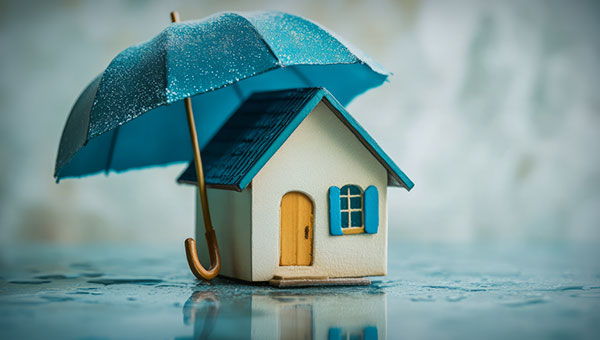
Mold: the unwelcome houseguest that sneaks in unnoticed and overstays its welcome. It's not just about unsightly patches on walls or that musty smell - it's a health hazard and a financial burden. If you've discovered mold in your home, your first thought might be, "Does my insurance cover this?" The truth is that it depends. Understanding your policy is the first step in tackling the problem. FDP Mold Remediation is here to help with both the cleanup and the know-how.
Homeowners insurance is primarily designed to handle sudden and unforeseen damages, which makes mold coverage conditional. The key here is causation - insurance companies focus on why the mold developed. If it's the result of a one-time accident, like a burst water heater or storm damage, your policy will likely cover remediation.
However, it's not guaranteed. Policies often include sub-limits for mold claims (e.g., $5,000-$10,000) and require you to prove the incident was within their covered terms. Carefully review the fine print and consult your insurance provider for clarity.
Examples of mold scenarios that possibly can be covered by insurance:
In each case, the mold growth is secondary to a covered peril. But insurers may require prompt action on your part to mitigate further damage.

Most policies explicitly exclude covering mold caused by negligence or poor maintenance, such as:
These exclusions reinforce the importance of regular home upkeep. Insurers expect homeowners to prevent foreseeable issues before they spiral into costly repairs.
Renters insurance typically focuses on personal belongings rather than the property structure. If mold damages your possessions (e.g., clothing, furniture, or electronics), the policy might cover repair or replacement - provided the mold stems from a covered peril, such as a sudden plumbing issue. However, renters should understand their limits. Mold caused by landlord negligence, such as failing to fix a known leak, may require legal action against the property owner rather than an insurance claim.
Home warranties and homeowners insurance serve different purposes, and understanding these differences is key when dealing with mold-related issues. A home warranty is an optional service contract that covers the repair or replacement of household systems (e.g., HVAC, plumbing) and appliances that fail due to normal wear and tear. While it might address the cause of mold - such as repairing a leaking water heater - it typically does not cover mold removal itself.
In contrast, homeowners insurance, often required by lenders, provides broader protection against unexpected perils, such as fires, storms, or burst pipes. If mold results from a covered peril, insurance may cover the cleanup and related damages, though you'll likely need to pay a deductible. Ultimately, warranties focus on maintenance and breakdowns, while insurance safeguards against sudden, catastrophic events, offering limited mold coverage in specific scenarios.
When it comes to filing an insurance claim for mold damage, the key is thorough documentation. The stronger your evidence, the higher your chances of approval. While the process may seem daunting, breaking it into manageable steps can simplify things.
Getting your mold claim denied isn't the end of the road. While it's frustrating, there are still ways to manage the situation effectively and protect your home moving forward.
Many insurance providers offer optional mold endorsements for an additional premium. These can significantly expand your coverage, offering peace of mind in case mold becomes an issue again. If mold is a recurring problem in your home, adding this coverage may be a wise decision for the future.
Mold removal costs vary, so shopping around can help you find competitive pricing. Many reputable companies offer flexible payment plans, making it easier to tackle large-scale remediation without straining your finances. While the cost may feel high upfront, untreated mold can lead to far greater expenses later.
Preventing mold from forming in the first place is your best defense. Regularly inspect your home for leaks, condensation, and areas prone to moisture. Fix water issues quickly and consider using exhaust fans or dehumidifiers in high-humidity spaces like bathrooms and basements. Routine maintenance goes a long way in reducing the risk of mold growth and safeguarding your home.
Even without insurance coverage, professional help can make all the difference. A licensed company like FDP Mold Remediation ensures the issue is resolved thoroughly, preventing further spread or recurrence. Beyond cleanup, professionals can offer advice on long-term prevention strategies, protecting your home and health.
Mold isn't just a cosmetic issue - it's a threat to your home and health. Whether you're dealing with a sudden mold problem or struggling with insurance coverage, FDP Mold Remediation is here to help. Our team specializes in fast, reliable mold removal, so you can breathe easier - literally.
Don't let mold take over your home.
Call FDP Mold Remediation now for expert guidance and professional mold removal services.
Let's tackle this together.



